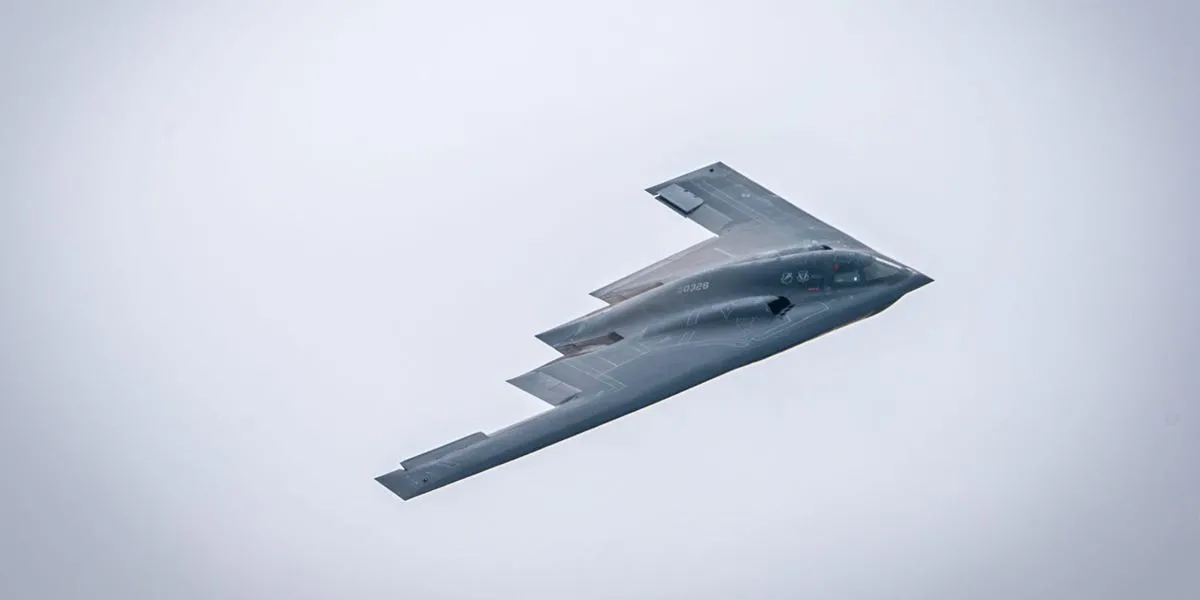
Over the weekend, seven American stealth bombers embarked on an extraordinary mission, completing a flight that lasted approximately 37 hours to target Iran's nuclear sites. The Pentagon has labeled this operation, named Operation Midnight Hammer, as the longest B-2 Spirit flight in several decades. This remarkable feat draws a parallel to the record for the longest B-2 bomber flight, which was set by retired Air Force pilots Melvin Deaile and Brian Jethro Neal in October 2001.
Neal and Deaile were part of one of the first bombing missions into Afghanistan following the tragic events of 9/11. They shared their experiences of executing these lengthy bombing missions and the challenges of performing aerial refuelings while often operating on just a few hours of sleep and some beef jerky. Neal described the chaos of September 11, 2001, as they were engaged in a nuclear capabilities training exercise when they received news of the attacks. Initial confusion surrounded the reports of hijacked planes, leading Neal to mistakenly believe it was part of their training until it became evident that they were preparing for a military response.
As members of a select group of B-2 crews, both pilots knew the B-2 Spirit well, although they typically flew the aircraft only a few times a month to limit maintenance issues. Their primary training occurred on the T-38 training aircraft, a more economical choice for maintaining flight proficiency. However, in early October, they took off from Whiteman Air Force Base in Missouri for their first wartime operation, heading west to Afghanistan under the cover of night.
Before their mission, the airmen had the foresight to equip the B-2 with a cot in the back of the bomber, a makeshift solution for rest during the lengthy flight. Neal recounted the tight sleeping arrangements inside the $2 billion aircraft, where he managed to catch only five hours of sleep over the entire 44-hour journey. To cope with the fatigue, pilots often receive stimulants from flight surgeons, but Neal opted not to take his "go pill," while Deaile did. They both experienced the excitement and adrenaline rush that accompanies such high-stakes operations, which kept them alert despite the challenges of pre-mission nerves and the continuous daylight as they flew westward.
Flying a bomber like the B-2 Spirit is a vastly different experience compared to operating fighter jets like the F-16 Fighting Falcon or the F-22 Raptor. Deaile had prior experience with B-52 strategic bombers, but the B-2's advanced technology and design present unique challenges. The B-2 requires only one pilot to maintain alertness during cruise, allowing the other to rest. However, critical phases such as takeoff, landing, bomb deployment, and refueling necessitate the full attention of both crew members.
Refueling the B-2 during these long missions is a complex task, requiring tanker crews to be specifically certified for the aircraft's unique characteristics. The refueling process can be nerve-wracking, typically lasting around 30 minutes and demanding precision from both bomber pilots and tanker crews alike. The B-2's stealthy design is not only a marvel of aviation engineering but also a challenge to maintain, as even minor damages can compromise its low observability.
Neal and Deaile's flight set a new record for the longest B-2 flight due to a last-minute directive from headquarters that required them to return to Afghanistan to deploy their remaining bombs. After successfully dropping a dozen bombs, they received orders to return and launch four additional bombs, requiring even more refueling. Complicating matters, the tanker crew dispatched to assist them was unfamiliar with refueling the B-2, necessitating a wait for a certified crew. By this stage of the mission, both pilots had shifted their focus from food to hydration, relying on snacks like beef jerky and grapes to sustain them.
After completing their mission and dropping the final bombs, the pilots redirected their flight towards Diego Garcia, an airbase in the Indian Ocean. Neal had humorously packed an unusual item for a B-2 mission: his fishing rod. Following their return, another crew took over the Spirit of America, while Neal and Deaile boarded a military transport aircraft back to Missouri, remarking that it was a more comfortable journey than their outbound flight.
Reflecting on the recent B-2 mission into Iran, Deaile expressed admiration for the maintenance and management of the B-2 fleet. With fewer than two dozen B-2 aircraft in operation, the successful execution of the Iran mission required efficient coordination and flawless performance from the entire fleet. Deaile highlighted that the Air Force mobilized a third of its bomber fleet in one night to undertake this mission with remarkable precision.
This operation underscores not only the capabilities of the B-2 Spirit but also the dedication and expertise of the personnel who operate and maintain these advanced aircraft.